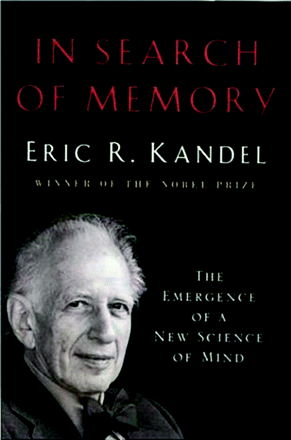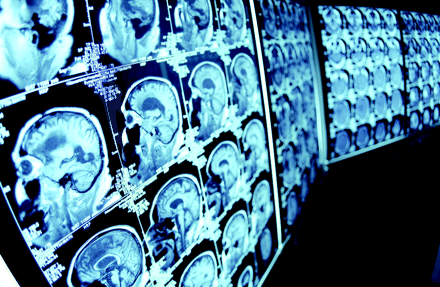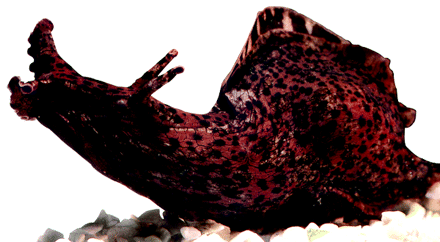“Know Thyself”
In Search of Memory: The Emergence of a New Science of Mind.

Eric R. Kandel. New York: W.W. Norton & Company; 2006. 352 pages. $29.95. ISBN: 0393058638
Words once engraved at the entrance to the Temple of Apollo at Delphi (“Know Tthyself”) formed the introduction to Eric Kandel’s address at the banquet following the Nobel Prize awards ceremony; they also offer a fitting description for his life’s work. The indelible memory of his own experience at the hands of Austrian anti-Semites became an obsessive incentive to spend over half a century carefully and successfully dissecting the cellular and molecular basis of memory. In his book, In Search of Memory: Emergence of a New Science of Mind, at once neuroscience text, neuroscience history, and warmly candid autobiography, he interweaves the story of his life with the curious progression of scientific discoveries that led to our current understanding of how and why we remember.

The book begins with Kandel’s recollection of his childhood in a culturally and intellectually rich Vienna and the tragic night in 1938, known as Kristallnacht, during which violence against Jews in Germany and Austria erupted. Still etched in his mind, almost seventy years later, is the tiny apartment and the blue toy car that was gone when the young Kandel returned to the ransacked remains of the family home just days after the terrible night. Subsequently, Kandel and his family were able to come to the United States.
The beginnings of Kandel’s interest in neural science come, unexpectedly, after the derailment of his plan to become a scholar of modern European history and literature. Left without an instructor his senior year at Harvard and thoroughly fascinated by the work of Sigmund Freud, Kandel pursued a medical degree in order to become a psychiatrist. Near the end of medical school, Kandel pursued research in the laboratory of neurophysiologist Harry Grundfest at Colombia University, where he began a search for Freud’s id, ego, and superego in the brain. During that experience, Kandel embarked upon a path that would define the remainder of his career.

Kandel’s Nobel Prize winning–studies in the area of memory are placed in the much larger context of the “science of mind.” This term represents the synergism of several different methods of studying the brain and grew out of the belief that insight into human behavior and mental illness would demand empirical analysis of the whole animal (human psychiatry and psychoanalysis), the organ (brain imaging), and the cell (cellular and molecular neurobiology).
The book describes very complex science with remarkable simplicity, such that a novice to the world of neuroscience should have an easy introduction. The story of the brain evolves from its role late in the nineteenth century as a mysterious organ with little relationship to the immutable soul or human behavior. Kandel’s story of the brain unfolds one region, one theory, and one cell at a time.
In Search of Memory paints the profession of science from a refreshing perspective of self-awareness, according to which changes in dogma are rarely, if ever, readily accepted. Kandel describes with full recognition the resistance he and others faced as they sought to break barriers to our understanding of the brain. The use of invertebrate models by Kandel and others, including Alan Hodgkin and Andrew Huxley, was originally disdained by scientists who believed that the neural processes of lower animals would find little relevance to higher-order animals. Kandel embraces his own single-mindedness and lauds colleagues who similarly ignored convention and pursued accessible model systems to study cellular neuroscience. Often, progress seems to evolve by means of debates between scientific camps rather than through the work of visionaries. One such debate became known as the “soups vs sparks” controversy that pitted chemical neurotransmission against electrical neurotransmission as the primary means of signaling in the brain. Kandel refers to indignant dustups at scientific meetings that left prominent researchers with bitter distaste for their adversaries and often with bruised egos.
Interestingly, despite his assertions to the contrary, Kandel makes research look easy. Perhaps because the experiments and techniques are described with such clear, precise language, and the results—at one time revolutionary—are now accepted as matters of fact, the naive reader might get the feeling that all it takes to win a Nobel Prize is a good idea and a hard head. Nevertheless, the anticipation of a single, successful experiment engulfs the reader like a good thriller, and the special relationships forged among close-working labmates and collaborators, such as Kandel and his dear friend Alden Spencer, give the science a very human feel. Scientists will find such a clear depiction of the life of a researcher gratifying.

Kandel ends his journey through the last century of the science of mind with his perspectives on the future of brain research and on changes in the academic community—particularly the biotech explosion and the evolving relationship between academia and industry. With half a century’s experience, his ideas are progressive yet cautious, and always given the utmost ethical consideration. Young researchers will be inspired by Kandel’s indefatigable enthusiasm to pursue the unknown and to break down barriers between disciplines.
Following his Nobel Prize, Kandel worked with the Austrian president and minister of education to create a symposium designed to address, for the first time at such an official level, Austria’s mistreatment of Jews and the intellectual and cultural losses suffered as a result. During a trip to culminate that work, Kandel returned to the door of the tiny apartment in Vienna where he played with his blue toy car, undoubtedly much more aware of what was happening in his brain when his eyes perceived the familiar surroundings and briefly replayed moments of his youth. Although at times chronologically disjointed, In Search of Memory retraces the steps that brought Kandel and his memories back to that door.
- © American Society for Pharmacology and Experimental Theraputics 2007



